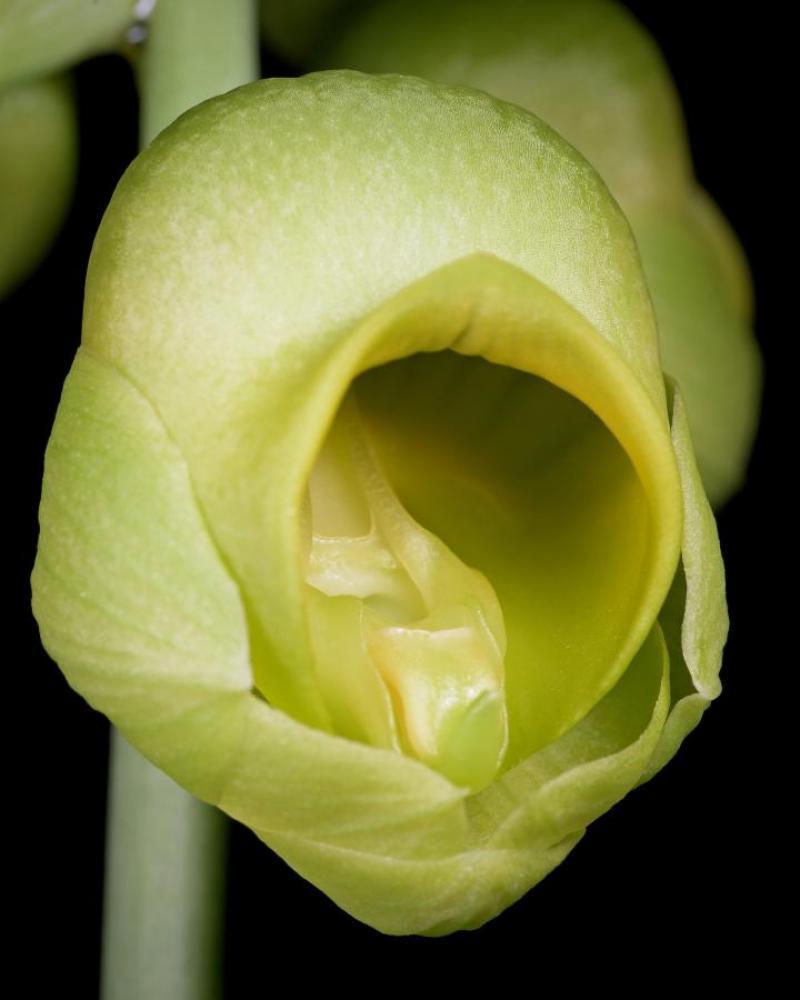Catasetum planiceps
Also known as: The Smooth Head Catasetum or Catasetum hymenophorum Catasetum chloranthum Catasetum sodiroi in the subfamily: Epidendroideae
General Information
The Smooth Head Catasetum is a sympodial warm to hot growing epiphytic orchid belonging to the sub family Epidendroideae. The name refers to the saccate lip.
Plant Description
Sympodial. Each new growth has numerous elliptic lance shaped leaves that grow to 8-37cm long. Pseudobulbs grow to 2.6-15cm
Flowers
Numerous fragrant blossoms appear during Summer and Spring
Fragrance
The orchid is fragrant.
Blooming Season
- Spring
- Summer
Substrate(s)
- Bark
- Charcoal
- Treefern
- Spaghnum Moss
- Perlite
Care Notes
These orchids have a fine root system that can quickly die back if left dry for too long, but also does not like to be kept wet, so water regularly but ensure that the mix is dry before watering.
Fragrant:- IsFragrant
Climate
Grows at low to high elevations. Rainfall ranges from 81mm to 244mm per day, heaviest in May and lightest in January. Humidity ranges from 77% to 89%, highest in June and lowest in March. Temperature ranges from 17C to 31C, highest in February (20C to 31C) and lowest in September (17C to 29C).
Watering
These orchids are sensitive to excessive watering and should only be watered when they look thirsty. Water infrequently and ensure that the roots are dry before watering. Keep an eye on them especially during hot weather as overwatering can lead to rot, whereas underwatering may result in wilting or shriveling, which while unattractive, will not kill the plant.
Fertiliser
These plants thrive on fertiliser, especially during periods of growth. Liquid fertiliser can be applied year round at the recommended strength, augmented with manure pellets or other quickly degradable fertiliser, applied away from the base of the plant, during periods of strong growth. Slow release pellets can also be applied year round at the rate of 2-3 pellets per cup (250ml) of media.
They can benefit from a high phosphate fertiliser leading up to flowering season, and by a high nitrogen fertiliser when new growth appears.
Use balanced fertiliser year round. This plant is a heavy feeder year round, full strength fertiliser can be used. Fertiliser can be applied heavily year round. Use a high Nitrogen fertiliser during Spring and Summer. Use a high Phosphorous fertiliser during Summer.Potting
These plants are quite forgiving and will do well repotted ever 2-3 years. The mix should be coarse, well draining, and allow space for air to move and for roots to grow.
Alternatively, these plants will also do well mounted to tree fern or cork slabs, or mounted to trees.
Best time for repotting or mounting the orchids is the end of winter when new growths start to appear. Avoid repotting during hot weather,
Use water retentive media such as moss to prevent roots from drying out quickly Repotting is best done annually.



















